To Adventures Beyond
The Cruising Almanac Tide Tables P 14 and Admiralty Tidal Stream Atlas NP218 became my books du jour for my research on when would be best to set off through the narrows. At the end of last year’s Ireland West Coast and Scottish island cruising we decided we’d had enough challenge for one season and Ornsay was as far north as we sailed. This year we have the added draw as our dear friends John and Jane and Pip (their golden cocker spaniel) are now in their new home, a croft on the shores of Loch Gairloch and we will not head south until we have visited them.
On the morning of 21st May I noticed one or two sailing vessels heading south. “Great,” I thought, “that fits with them taking the ebbing tide; we’ll leave after a walk ashore and a light lunch. Should be around three and a half, four hours to Plockton.”
Another consideration was, shall we try and anchor opposite Eilean Donan castle and dinghy across, or find another way of getting there? As a child back in the fifties and sixties my parents would bring my brother, Robin and me to Scotland on holiday, home to her mother’s side of the family, and I remember how my mum absolutely loved Eilean Donan and the Highlands in general. To get there would be partly in her memory; but the day was at the height of the spring tide and the pilot book warned of strong currents in the little anchorage, so we let the idea rest and focussed on getting to Plockton.
Two yachts were heading north as we nosed out into the Sound of Sleat on a calm, dry day. As they were ahead of us, I thought maybe they like the last of the ebb-tide against them to give them better steerage, nice thinking. The tide can run at 8 knots on a spring tide but as we were at the start of its turn, we expected a half to three knots in our favour. I drew the line on this photo, Zoonie’s course was much more graceful!
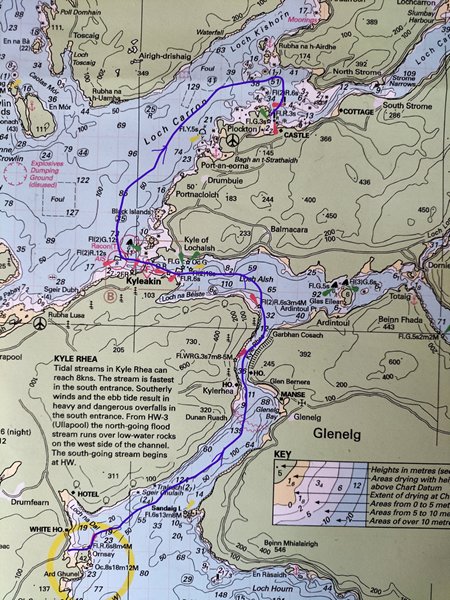
The unique turn-table ferry crossed in front of us as we passed, gliding on ice, it felt like, with circular expanses of smooth water, slowly churning around us and the mountains beyond visible through the short pass.
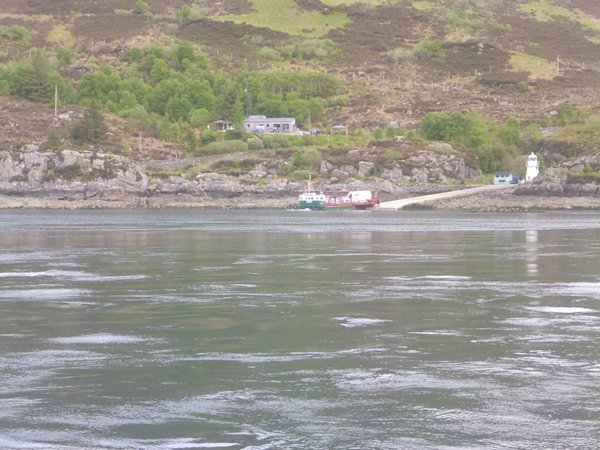
Surprisingly it really felt as if we were entering another realm, another area of adventure.
A little blue fishing boat led the way gradually turning a wide arc left towards the Skye Road Bridge from Kyle to the vast Isle of Skye. Maybe for future reference we noted yachts moored in little bays not far from the pass where it would be possible to await the tide’s turn. The narrows had given us a free, 3 knot boost of speed.
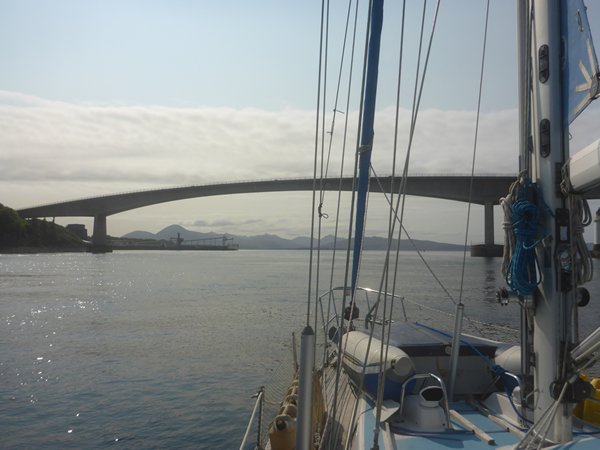
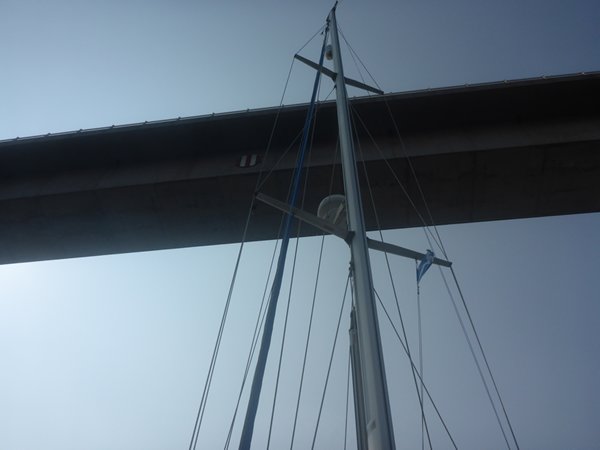
Snug fit? No, we had twelve metres clearance, but we can still gasp!
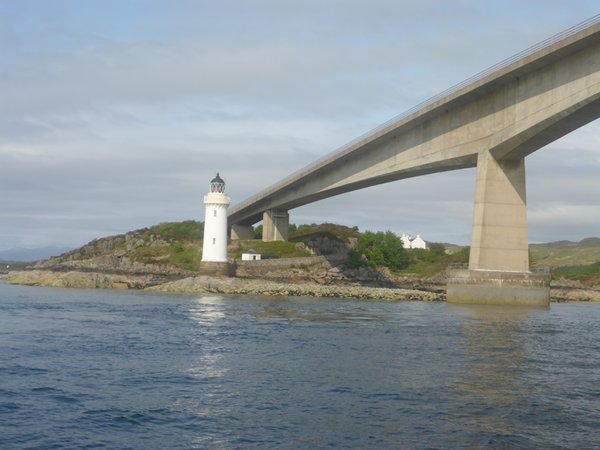
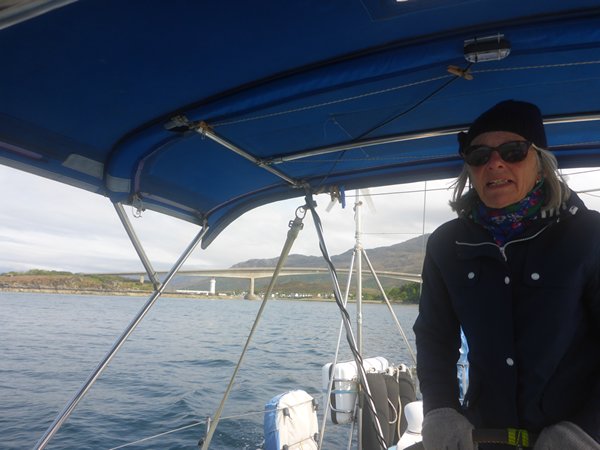
Keeping Skye on our portside we motored on, following the green buoys until we could turn around into Plockton mooring field. The rocky headland and its offshore rocks reach out like a protective mother’s arm, to provide safety and shelter in an exquisitely pretty spot.
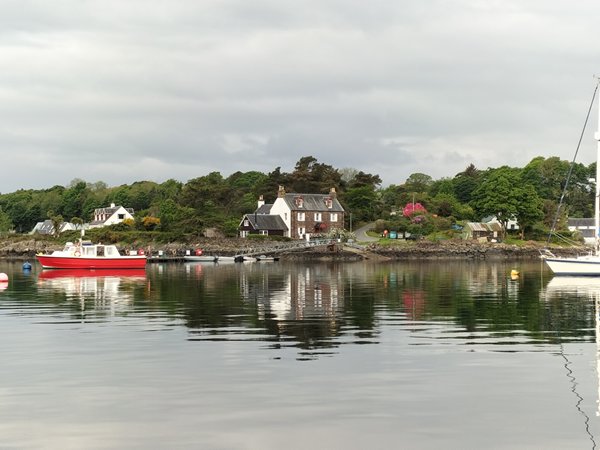
Although anchoring can give one peace, independence, economy, rest and relaxation, I am aware of how it can also destroy a fertile seabed, where there is weed and marine life; so, these days I am also happy for us to pick up a visitor mooring, give the divers some work, pay into the local economy and rest assured that Zoonie is safe and secure. Although it doesn’t always work out that way, as the kindly Frenchman pointed out to us in Horta, Azores, in a delicious French accent, “Monsieur, I think you are adrift.” How right he was, but that’s another story.